Victorian house extension ideas: Get ready to be inspired
Our collection of fantastic Victorian house extension ideas brings together the best of both traditional and contemporary designs to ensure there is something to suit everyone
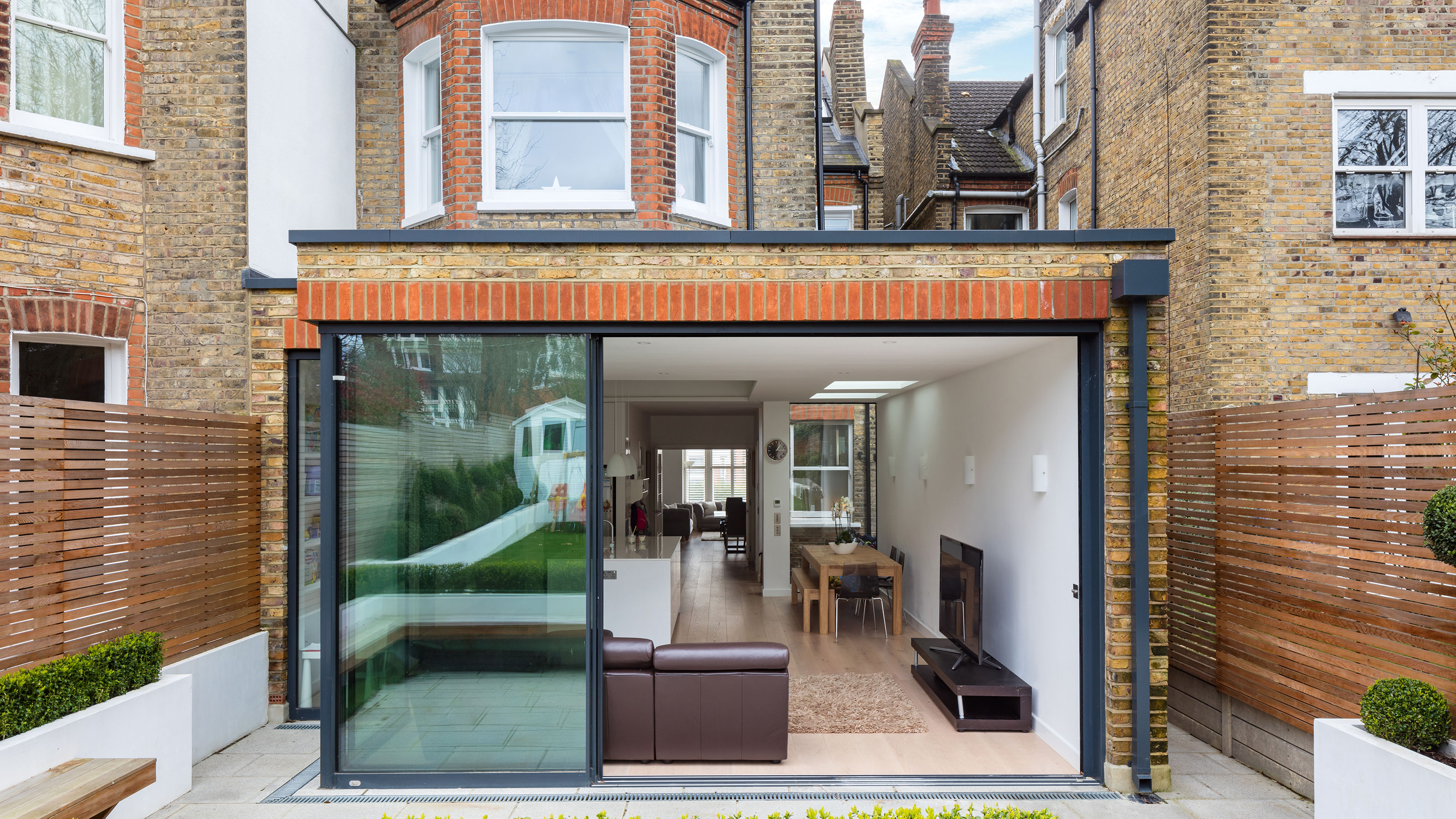
If you have been hunting for Victorian house extension ideas then call off the search — we have been busy gathering up the most creative and beautiful projects we've seen to ensure that you have all the inspiration you need for your own extension.
House extensions for any period of property need to be carefully planned, not only to ensure that they provide the extra space needed, but also so that they complement and enhance the existing building they are being added to. In the case of Victorian houses, with their character, fine detailing and intrinsic charm, it is more important than ever to ensure that any extension, whether contemporary or classic in its design, highlights and draws out these features rather than overshadowing them.
Within this collection of ideas, we have included everything from small side extensions that, despite their compact proportions still manage to transform the way the existing spaces can be used, to super modern additions that prove a complete contrast can work brilliantly.
Victorian house extension ideas: Matching or modern?
One of the first decisions faced by most homeowners considering house extension ideas for their Victorian home is whether or not it should be a structure that looks as though it has always been there, or something that sits proudly as a newer addition to the existing building — in short, should it match or contrast with the original house?
In some cases, the decision may well be taken out of your hands by the local planning department — in sensitive cases, such as conservation areas, it is not unknown for planners to insist on the use of matching materials. That said, more and more planners are now encouraging contemporary extensions – providing they are well-designed – keen that they are clearly new additions.
In many cases, contemporary extensions are now the favoured option — not only do they allow the details and charm of the Victorian building to shine, but the expanses of glazing they often incorporate bring light flooding into any darker original spaces.
If you do decide to take the matching route it is vital that you take time to source materials that are identical to those used elsewhere — it will often be necessary to scour reclamation yards. Getting the window details right is also key — never try to add uPVC replicas of your original timber windows to your extension.
1. Tie a side extension in with the original building
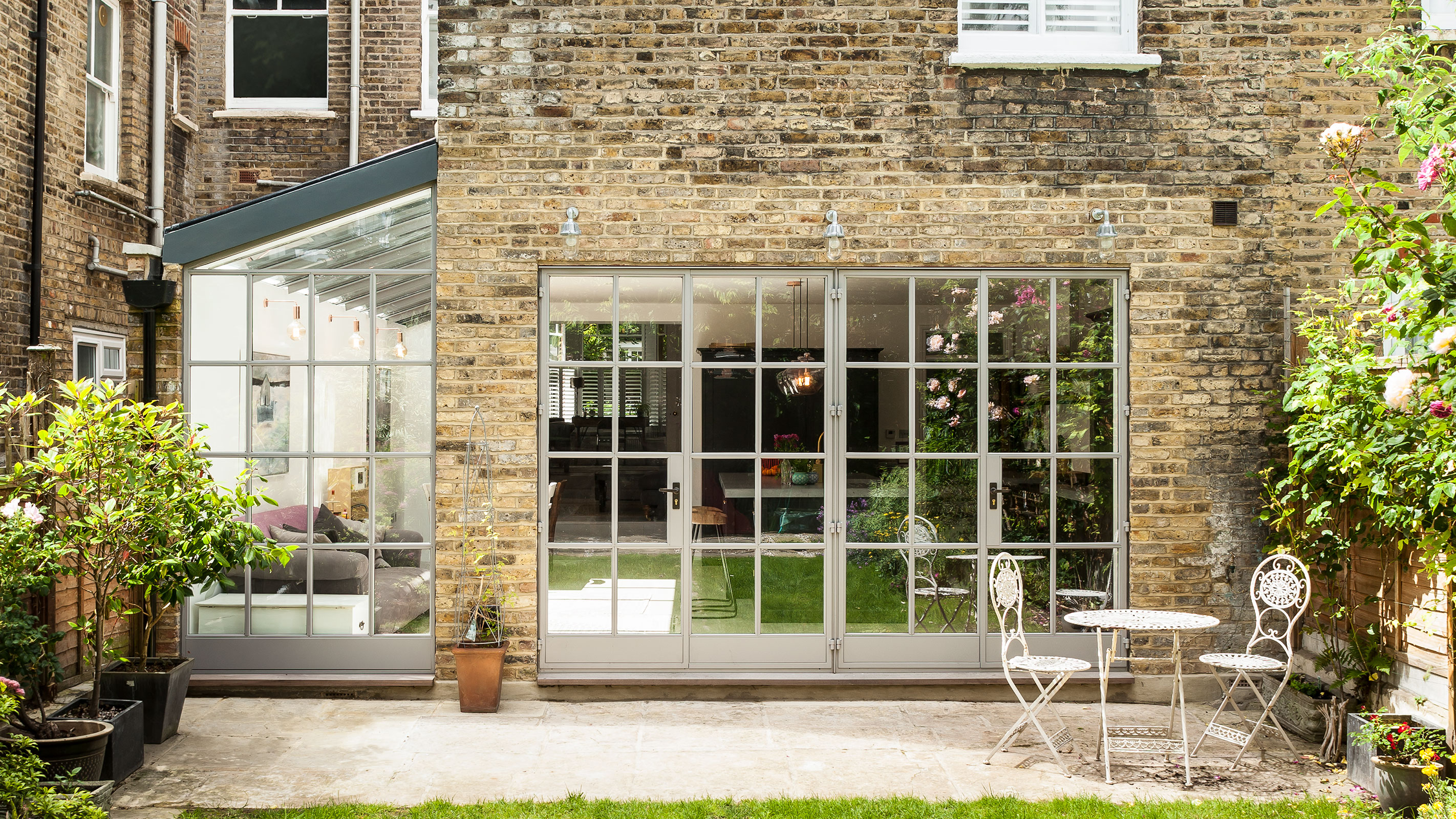
In this beautiful extension by Joe Wright Architects, space has been added through the addition of a heavily-glazed side infill extension. Through using the wasted space between the house and the neighbouring boundary, a large, light-filled kitchen diner has been formed, allowing for the reconfiguration of the layout elsewhere.
Side extensions are a hugely popular way to add space to Victorian homes and this project is a great example of a modern design that will not date — the multi-paned glazing has been mirrored in the newly installed matching glazing and doors that have been added to the existing rear wall. The bank of roof glazing that makes up the roof of the side extension floods the internal spaces with light but remains subtle in appearance from the exterior.
2. Mirror the form of the existing house
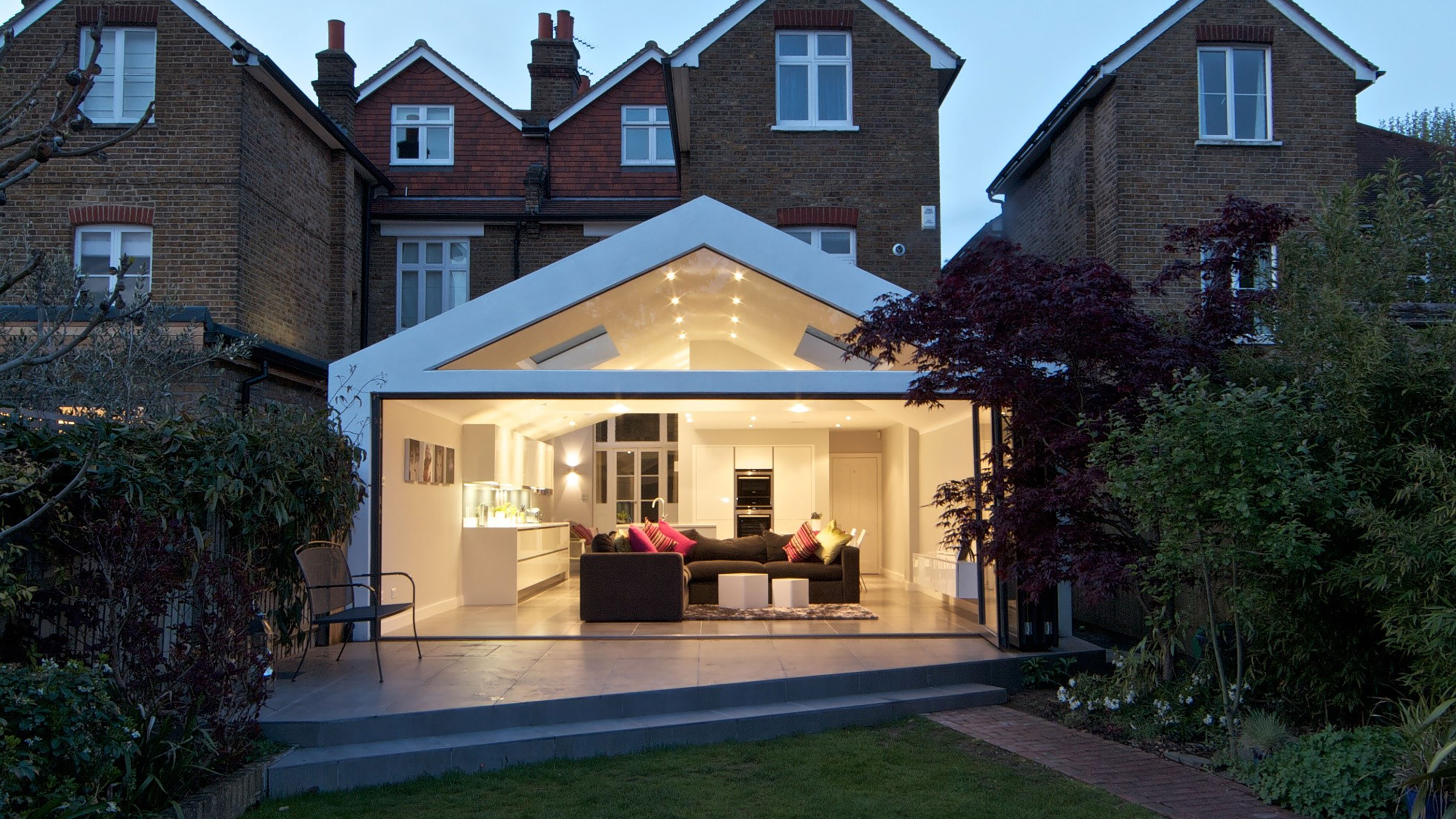
Well-designed modern extension ideas can really draw out the form and details of a Victorian house.
This striking glass gable roof extension, designed by Plus Rooms, might be an obviously new addition, with its clean lines and crisp white render finish, but by following the existing contours of the traditional roofs above, it still manages to sit in perfect harmony.
Concealed gutters and frameless glass means it doesn't compete for attention with the Victorian home it adjoins, but the stunning vaulted kitchen that now sits within the space has transformed the house.
3. Bring light in from all angles
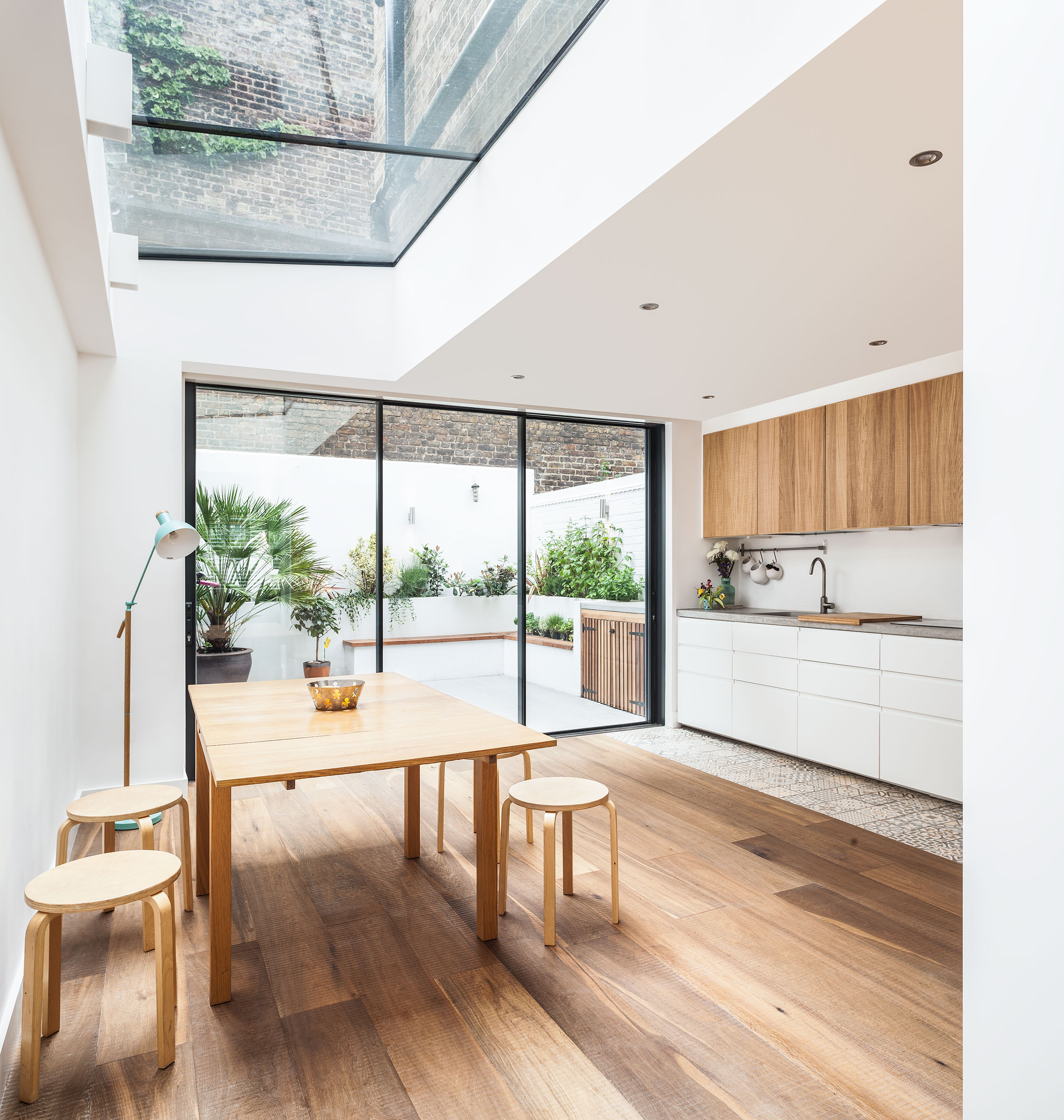
In the case of many Victorian terraces, a lack of natural light is one of the main things that needs to be addressed when designing an extension. There are lots of ways to overcome the issue, including incorporating large expanses of sliding or bi-fold doors, along with rooflights, roof lanterns and fixed skylights.
In this terrace house extension project, by Joe Wright Architects, slimline sliding patio doors and a large glass ceiling bring light pouring in from all angles.
4. Consider metal cladding to complement brick
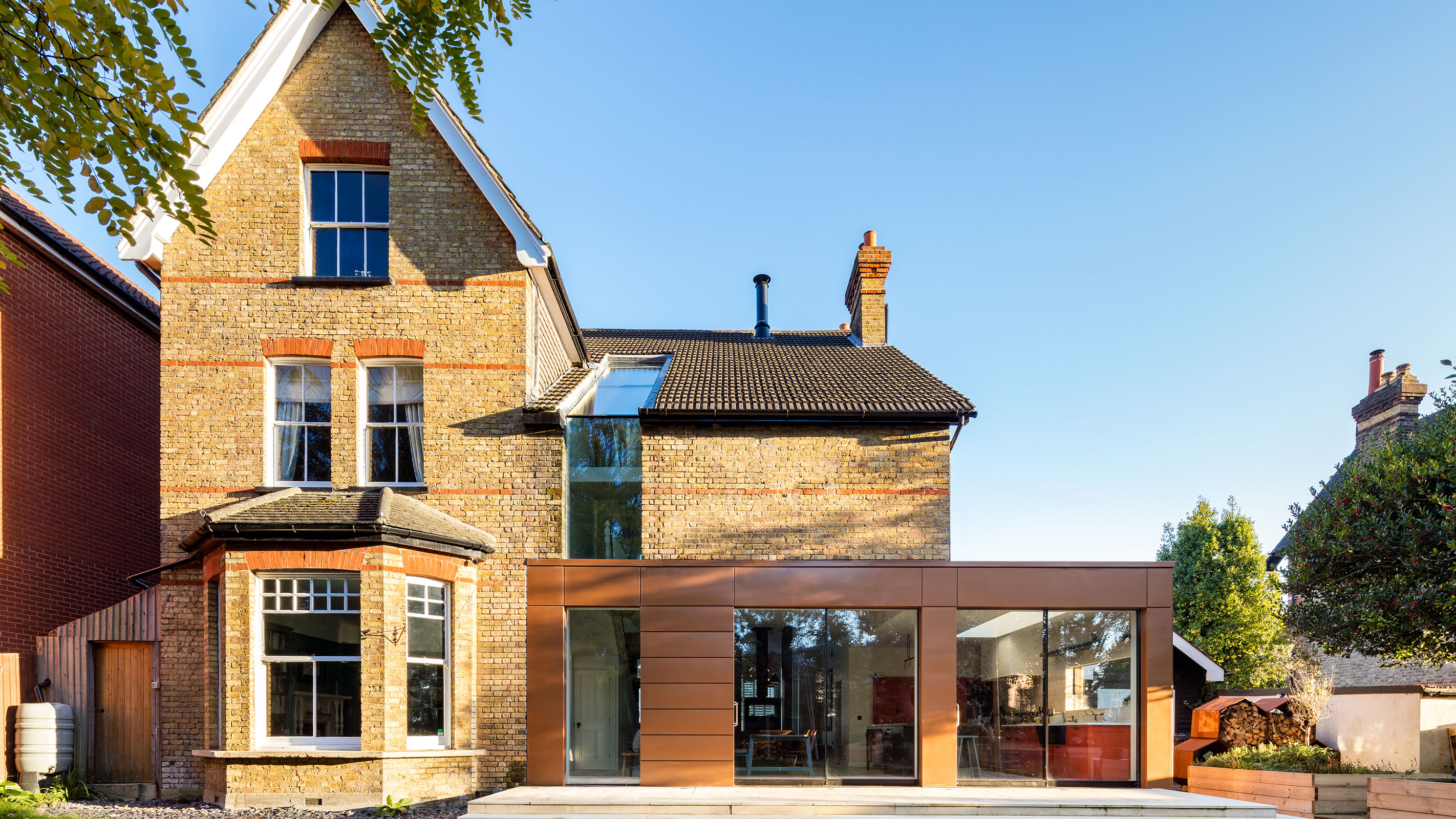
This highly striking metal-clad contemporary extension might be an obviously new addition, but it was carefully considered by Granit Architecture + Interiors to ensure it complements the beautiful Victorian house it sits alongside.
The metal cladding was chosen to echo the colour of the red brick string courses in order to tie in the old and the new. Slimline sliding doors give access and views of the garden. The horizontal form of the extension was designed to create 'visual balance' with the very vertical nature of the existing building.
5. Use the rooflines to unite the design
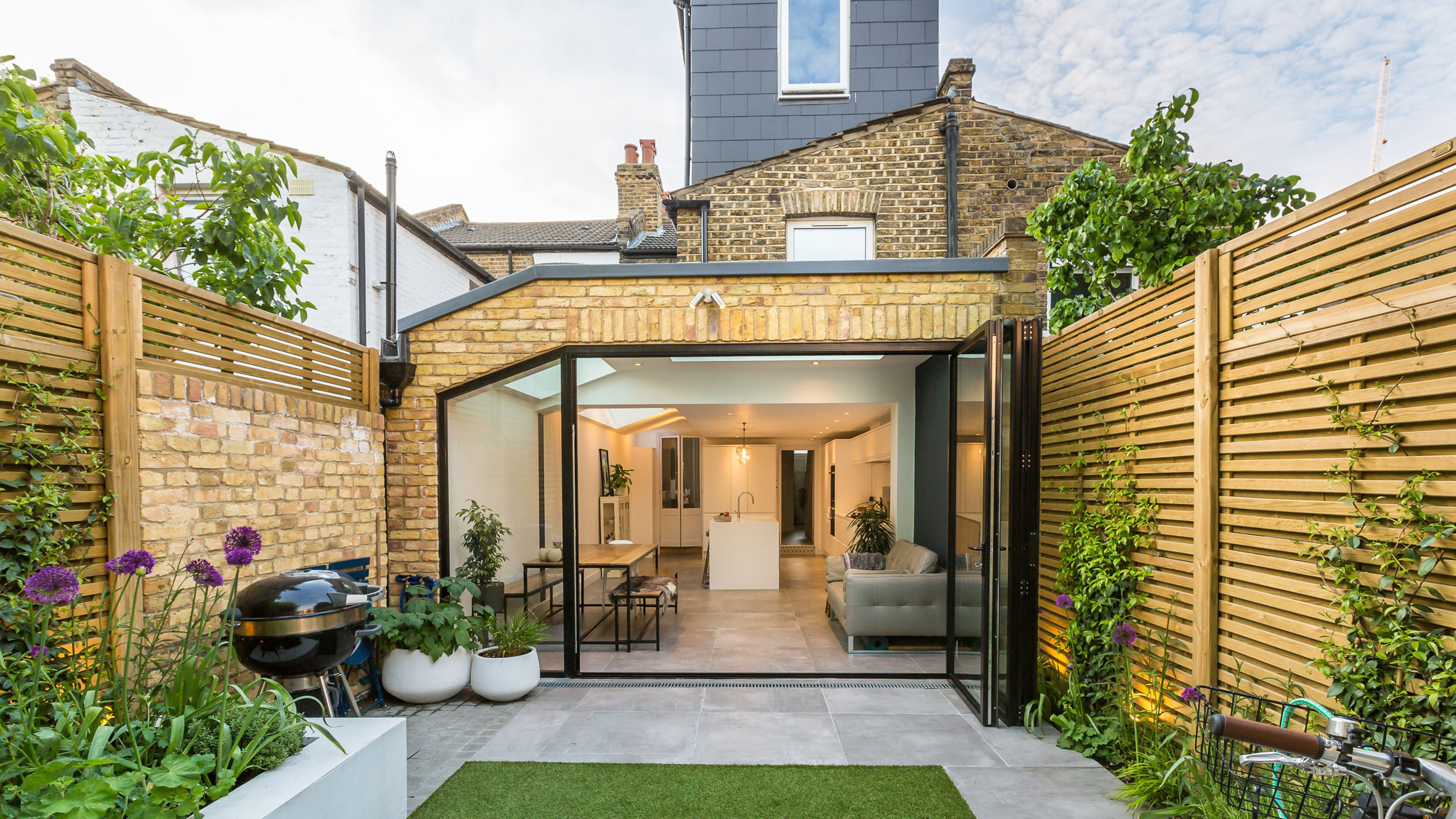
A great example of how an extension not only has the potential to add extra living space but also of how, done well, can actually enhance the existing form of a Victorian home.
This design, by Plus Rooms, has extended the space out into the rear garden, as well as utilising the previously wasted space at the side. Much of the success of this project lies in the clever 'pitched-flat' roof that has been used — it mirrors the line of the pitch of the main roof that can be seen above and has been fitted with large, frameless skylights.
6. Use a fully-glazed structure for a side extension
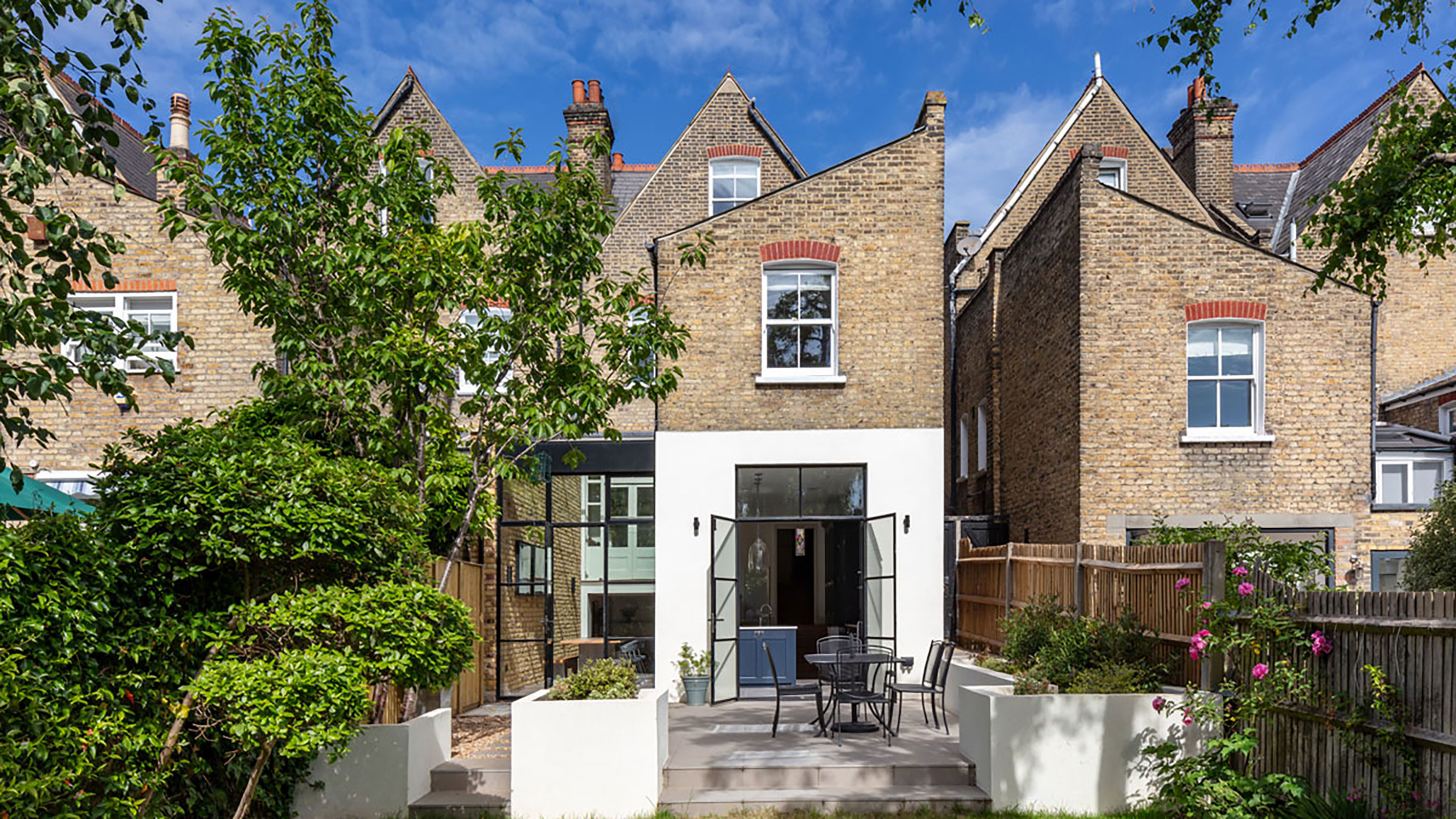
Those after innovative glass extension ideas take note. With a brief to strike a balance between old and new, Granit Architecture + Interiors approached this project with the aim of bringing more light into the house as well as creating a better connection with the garden — and getting the propotions of the design right was key too.
A lightweight glazed side extension has added a bright and airy new space for cooking and dining and easy access to the outdoor areas was ensured by dropping the floor level in the new addition.
7. Draw light into terrace house extensions
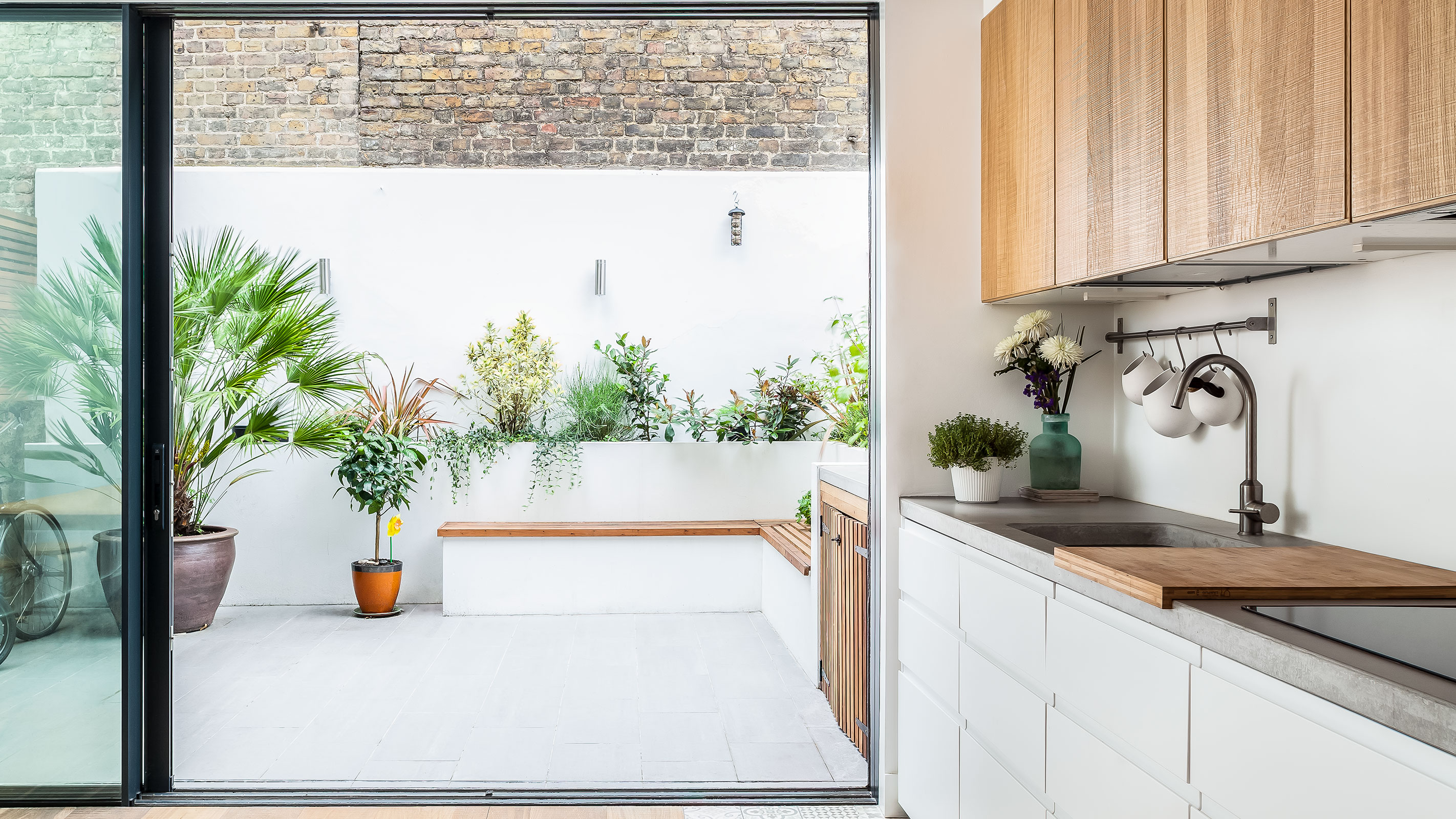
The extension of this Victorian terrace house needed to take into account the cramped and dark ground floor and the elevated railway at the rear of the house that was previously restricting daylight from entering the interior spaces.
Joe Wright Architects came up with a design that opened up the ground floor to the sky. They have also used some clever courtyard garden ideas to reflect light, finishing the walls off with bright white render and using pale-coloured paving.
8. Opt for a full-width extension if space allows
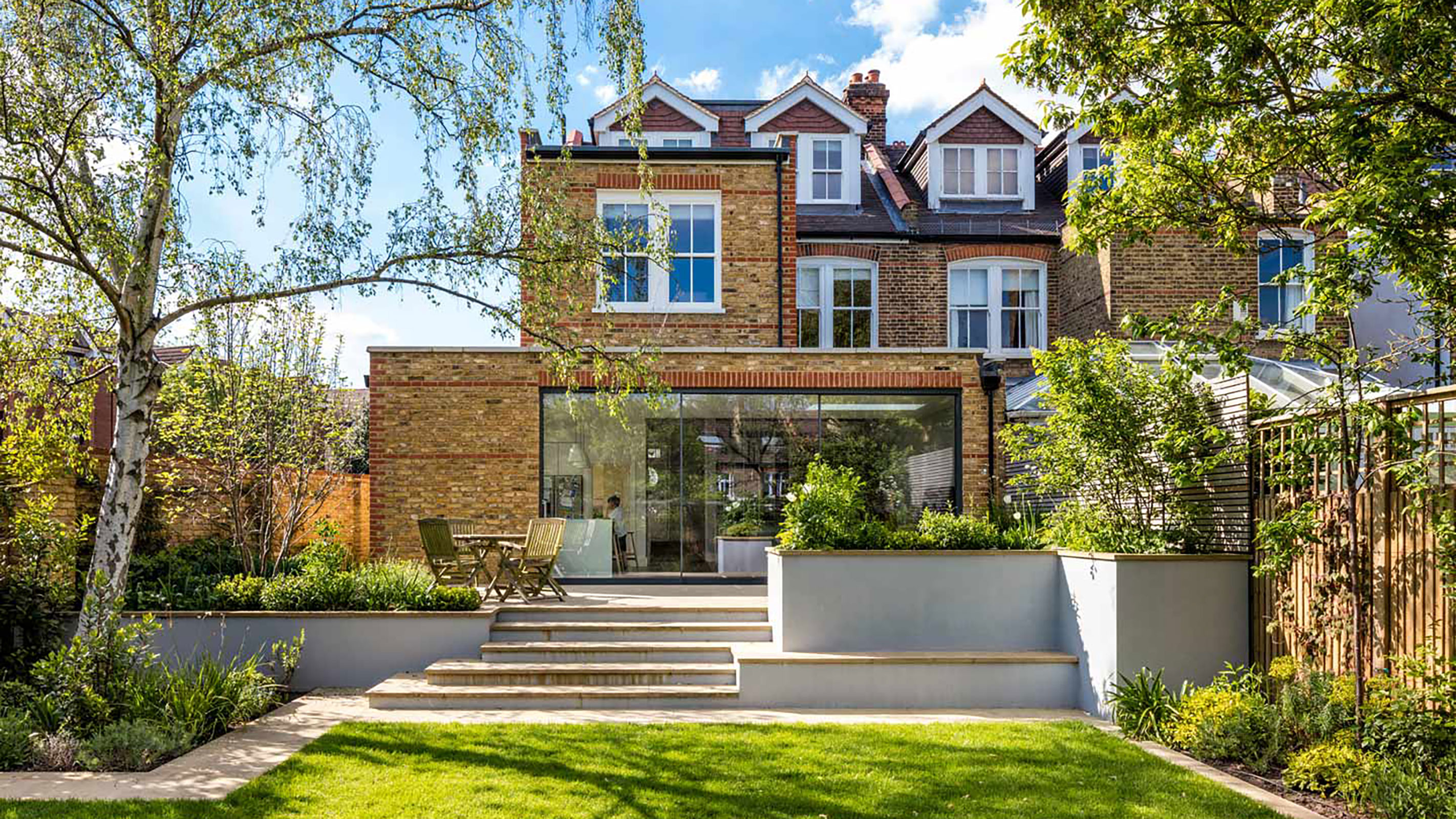
The owners of this once tired late Victorian semi-detached house were hunting for rear extension ideas that would give them space for a new kitchen, downstairs accessible WC, utility room and a full sized larder. Granit Architecture + Interiors responded by designing a ground floor level addition to the rear and the side.
In order to ensure the new extension had a good connection with the garden, the ground floor level was dropped and full width minimal glazing has been installed across the rear. Internally, the new rooms are flooded with natural light thanks to large roof lights.
In terms of the materials used, the red brick detailing used within the extension creates a nice link between old and new.
9. Add character with Crittall-style windows and doors
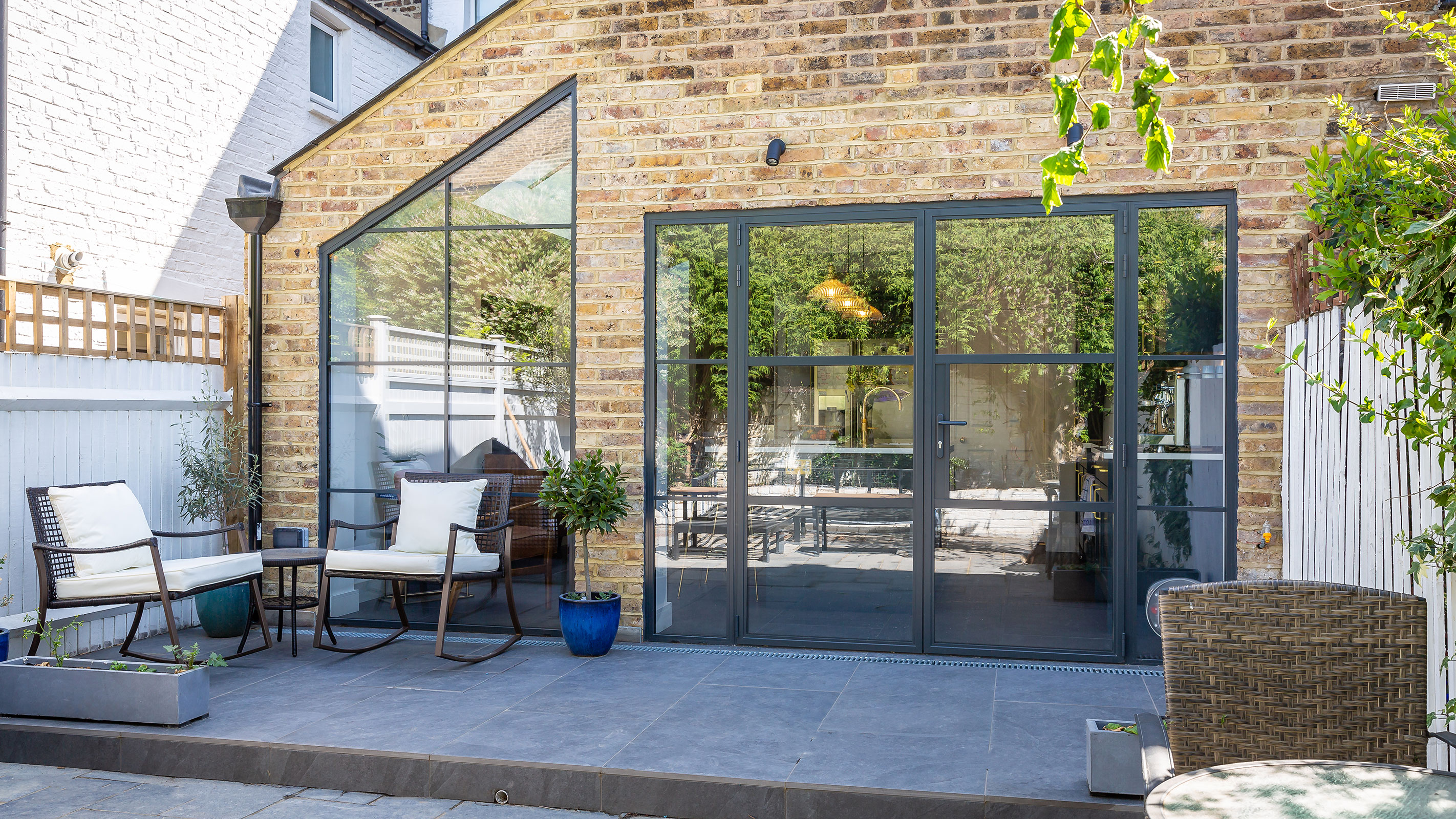
The new side extension to this Victorian house features a pitched roof that extends up the existing outrigger back wall to give a soaring, spacious feel to the interiors.
Designed by Plus Rooms, the extension features a fixed panel of Crittall-style glazing that pulls it together with the existing section of the house, which has been fitted with new, matching doors and windows. Not only has this created a nice sense of unity, but it has also ensured great views of and connection with the external spaces.
Once made from steel, Crittall-style doors are now available in many other materials, including timber and aluminium.
10. Combine a loft conversion with your extension
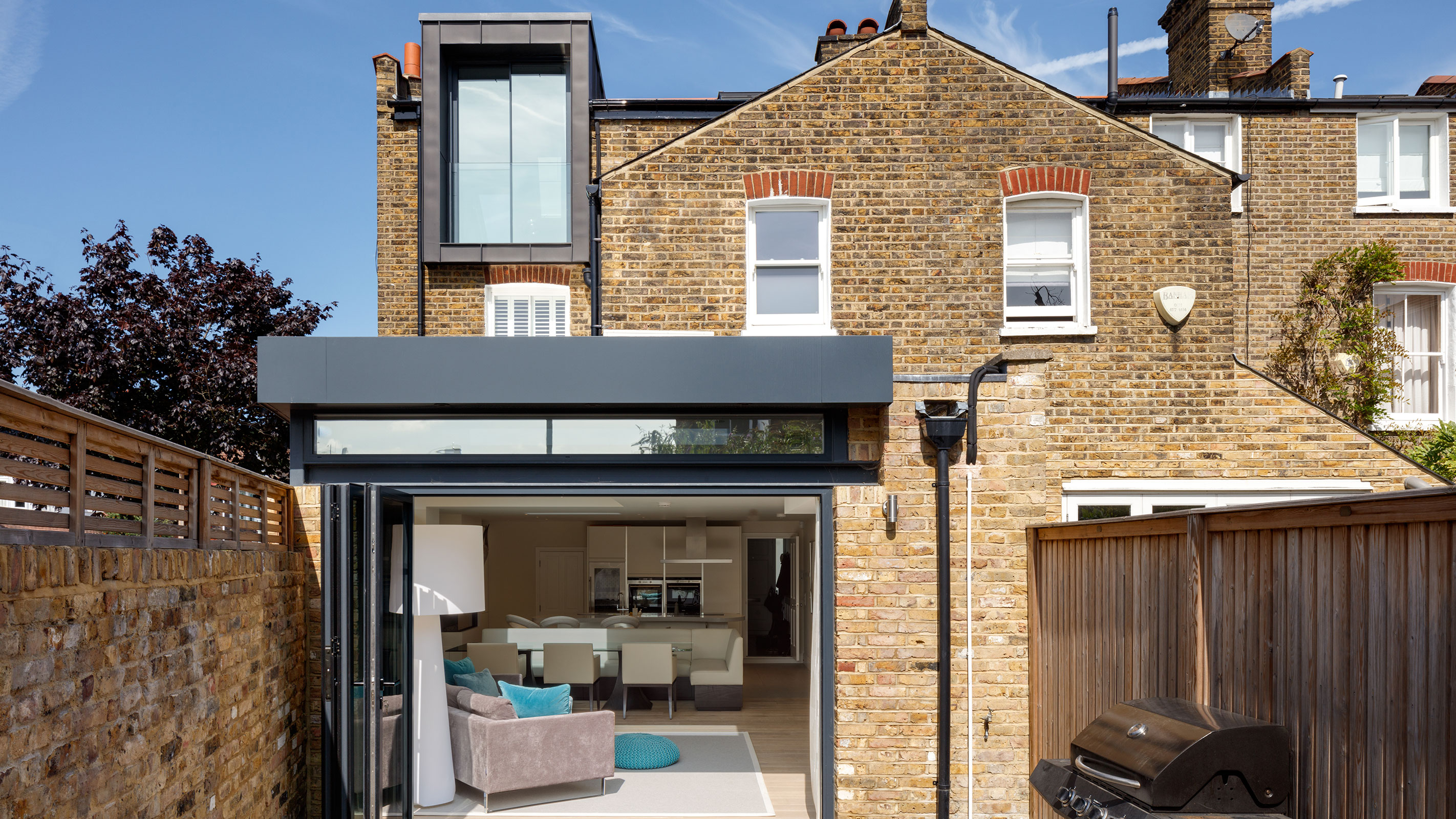
Carrying out a loft conversion at the same time as an extension presents a great opportunity to tie the two together visually — and this project by Granit Architecture + Interiors is a great example of how to do it well.
Due to current restrictions within certain London boroughs, the volume of this loft space could be no more than 50 cubic meters, so Granit proposed a hip to gable extension, with a large dormer to the rear to make the most of the second-floor space.
The single storey rear extension uses the same cladding materials and a clever clerestory-style window that runs around the new structure between the flat roof and the bifold doors to bring in maximum daylight.
11. Dig down to get the most out of your space
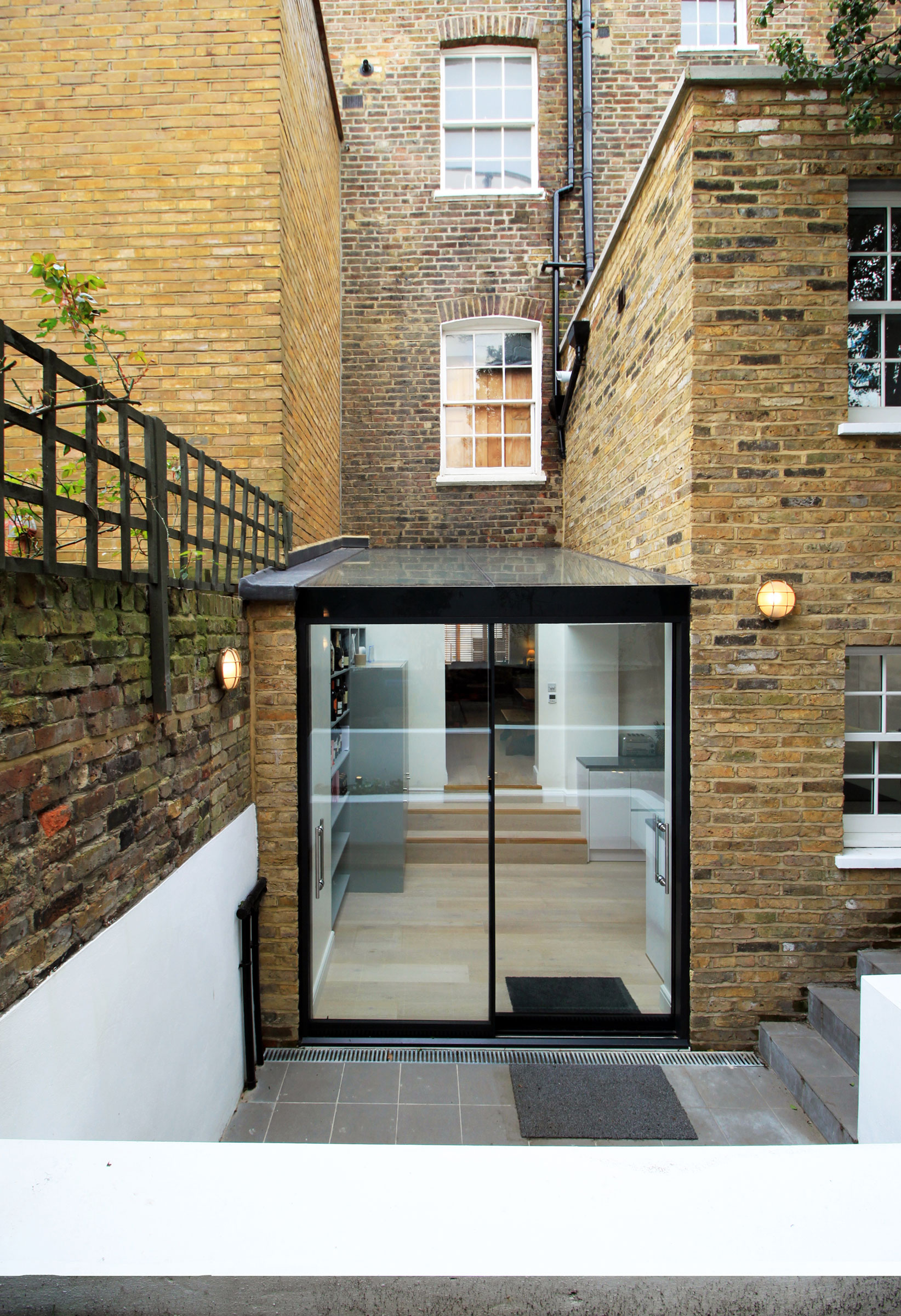
This Grade II Victorian maisonette needed a sensitive approach when it came to forming the kitchen extension ideas required by the owners.
Joe Wright Architects came up with the idea of digging down below the existing bathroom in order to create a 'semi-basement' that would provide the space to incorporate a large new kitchen. The expanse of glazing, used for the doors and roof, ensures daylight is maximised without detracting from the beautiful original brickwork of the building.
12. Consider clerestory windows to draw in light
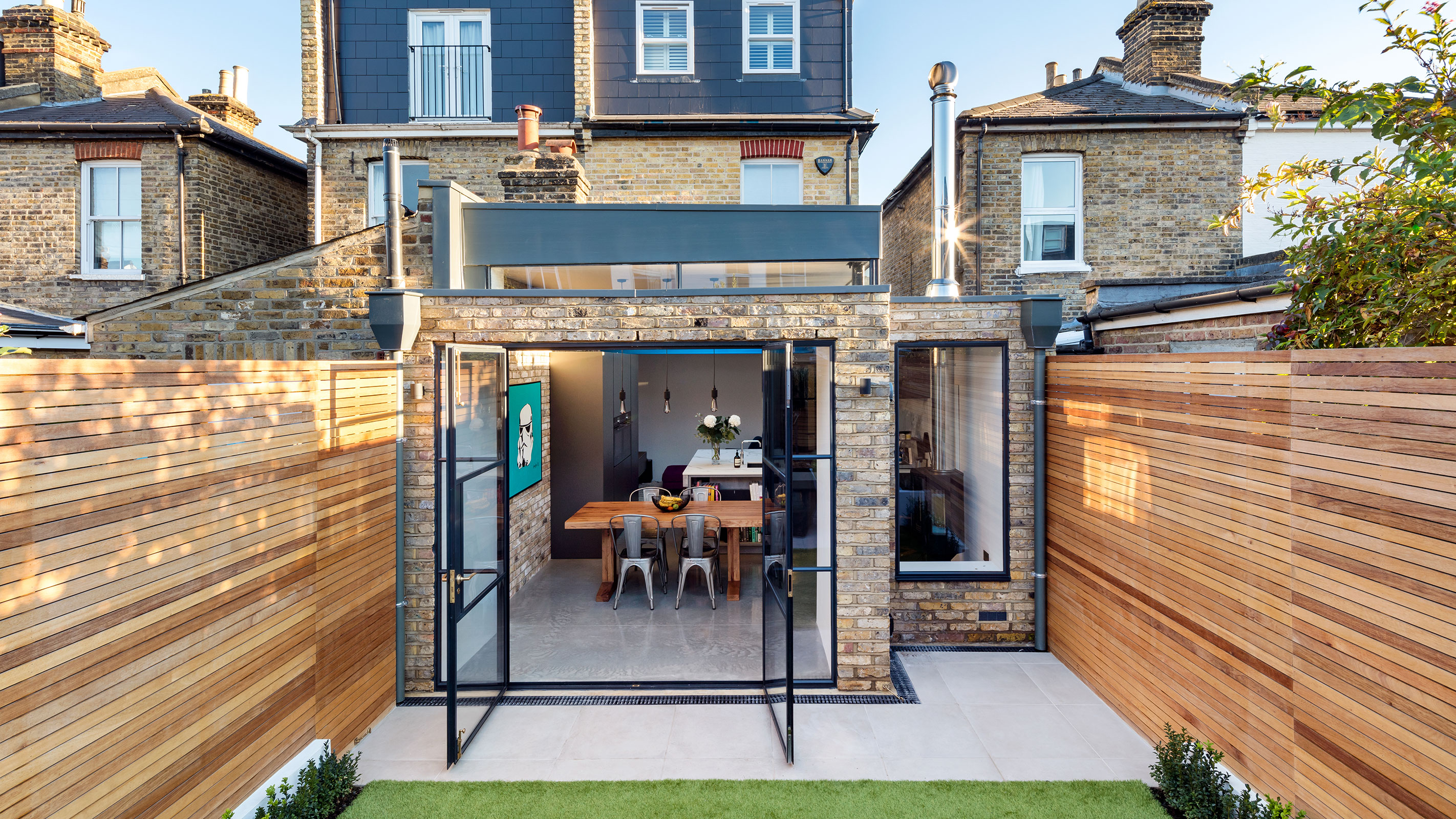
Keen to stay living in their Victorian home but desperate for more space, the owners of this house wanted a bright and airy kitchen diner with views out over their contemporary garden.
Using a combination of heritage-style steel framed glazing, clerestory windows and a highly polished concrete floor, the new space is full of natural light. The raised section of roof, with its high-level glazing, is an ingenious alternative to the more traditional roof lantern, while the fixed glazed panel in the side return extension adds another dimension.
13. Contrast the existing building with charred timber
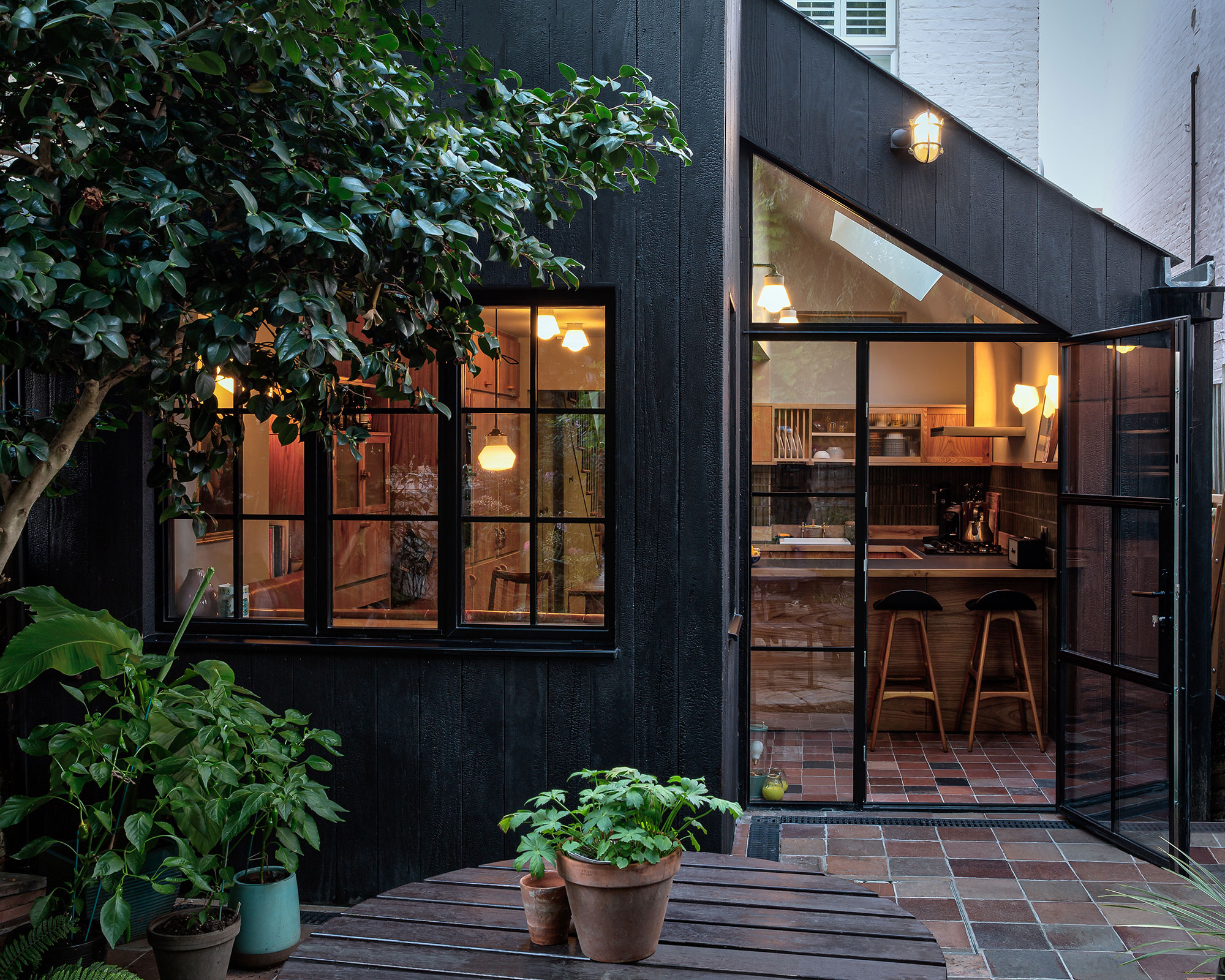
This rear and side extension, designed by Plus Rooms, has been clad entirely in charred timber to ensure it stands proudly as the new addition it is. Fitted with industrial-style windows and doors, the extension manages to look both modern and charmingly rustic.
The opposing side and rear pitched roofs were designed to create an acentric gable design for further interest.
14. Keep it simple and seamless
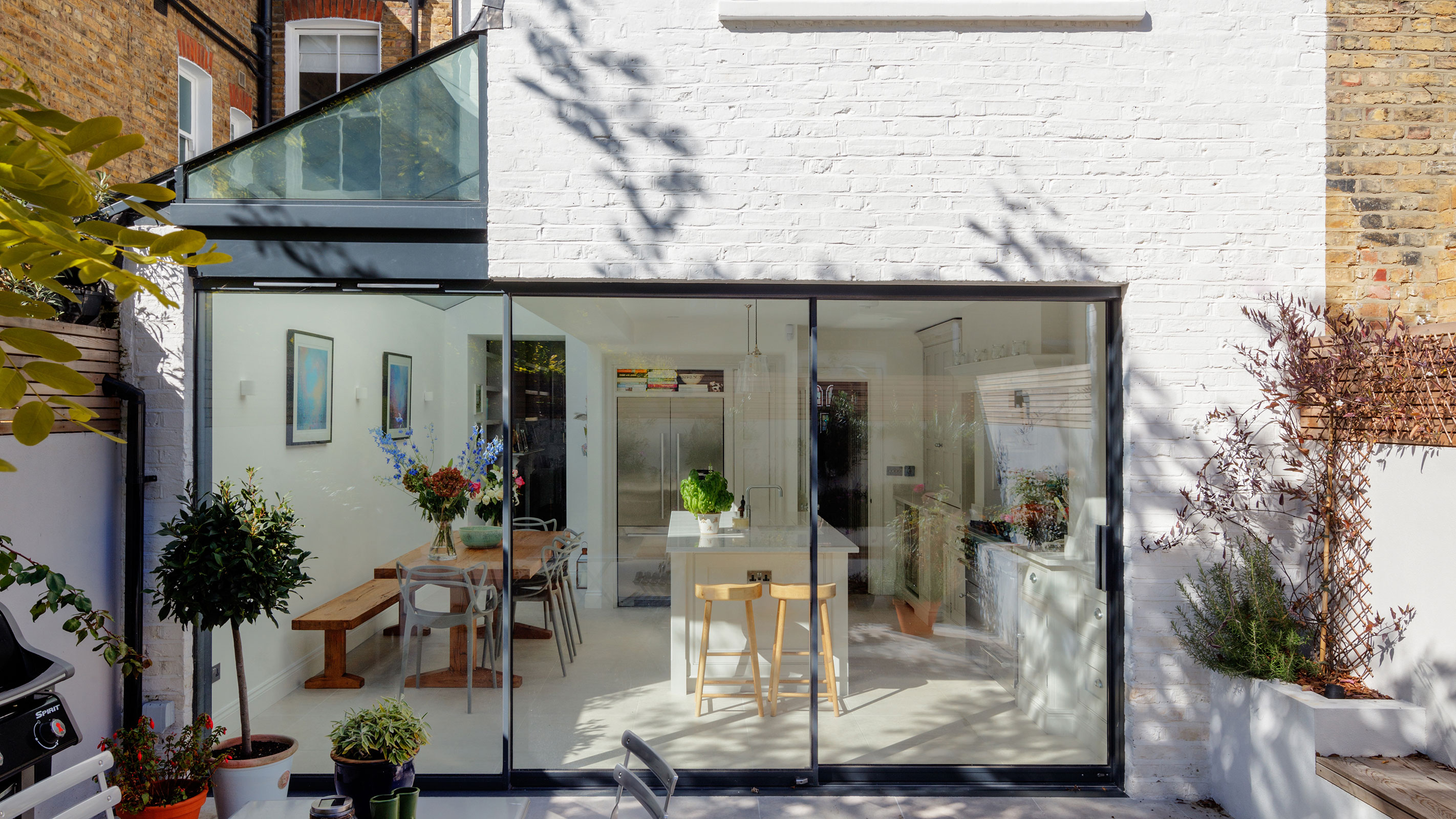
There is no reason why an extension needs to be complicated and if you are keen that the new addition to your home won't jostle for attention with your existing home, simple and fuss-free is definitely the way to go. Side return extension ideas work really well when given the pared back treatment.
This project, designed by Granit Architecture + Interiors features a side return extension that has opened up the entire rear of the house to the garden. By fitting the whole back wall with slimline sliding doors, the new and old areas of the house have been tied together seamlessly, while a pitched glass roof over the side return completes the look.
15. Explore the idea of a lean-to extension
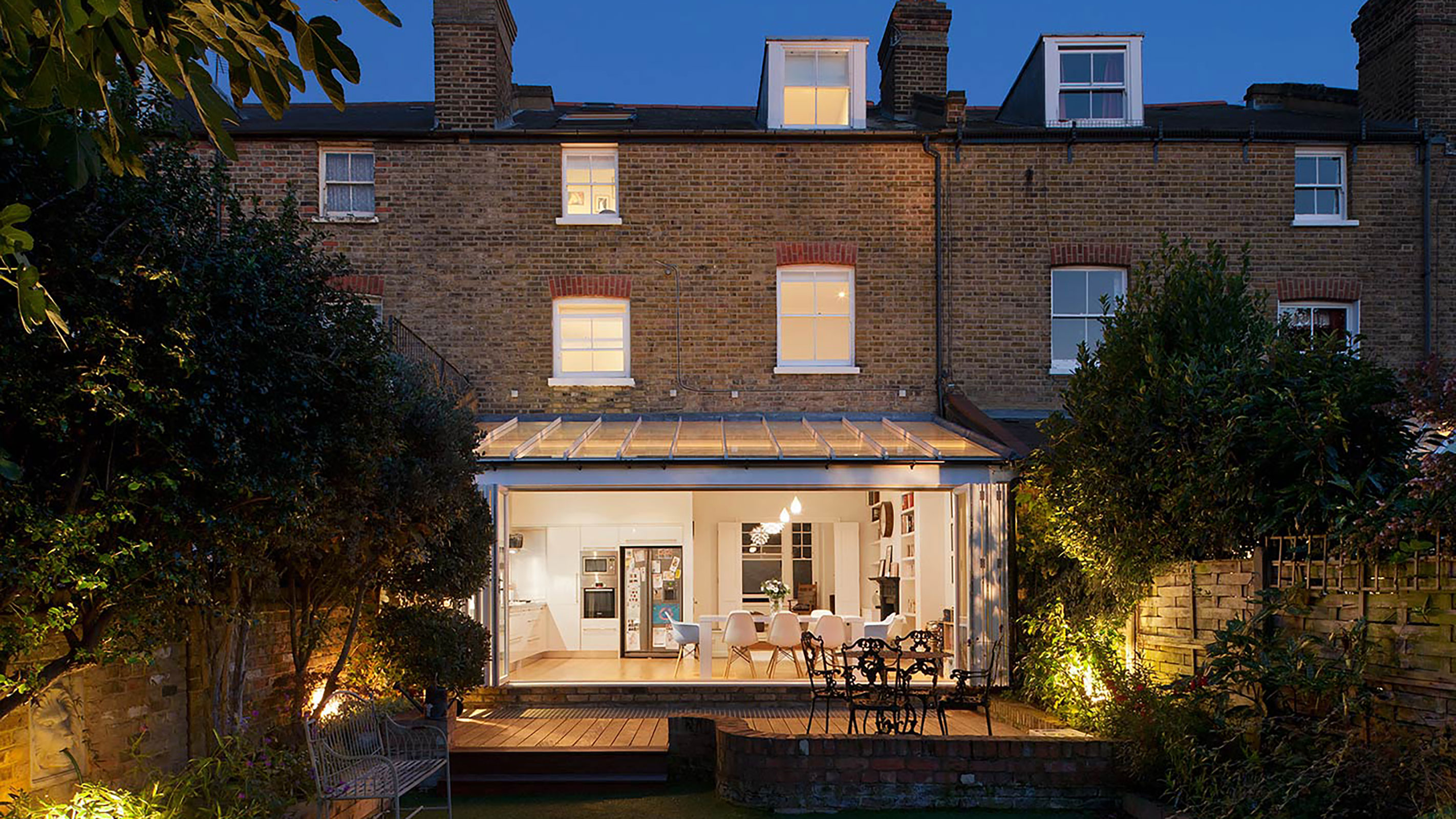
Lean-to extensions are a great way to extend a number of house styles — Victorian included.
"Single-storey lean to extensions are among the cheapest types of extensions you can build," says Homebuilding & Renovating's Assistant Editor Amy Reeves. "The simple, box-like forms with a fuss-free flat roof often makes easier (and cheaper) to build, although cladding and the interior fit out can create an interesting and dynamic-looking space."
Here, a large glazed lean-to extension, designed by Granit Architecture + Interiors allows natural light to pour into the ground floor and creates connection with the garden.
Get the Homebuilding & Renovating Newsletter
Bring your dream home to life with expert advice, how to guides and design inspiration. Sign up for our newsletter and get two free tickets to a Homebuilding & Renovating Show near you.
Natasha was Homebuilding & Renovating’s Associate Content Editor and was a member of the Homebuilding team for over two decades. In her role on Homebuilding & Renovating she imparted her knowledge on a wide range of renovation topics, from window condensation to renovating bathrooms, to removing walls and adding an extension. She continues to write for Homebuilding on these topics, and more. An experienced journalist and renovation expert, she also writes for a number of other homes titles, including Homes & Gardens and Ideal Homes. Over the years Natasha has renovated and carried out a side extension to a Victorian terrace. She is currently living in the rural Edwardian cottage she renovated and extended on a largely DIY basis, living on site for the duration of the project.

